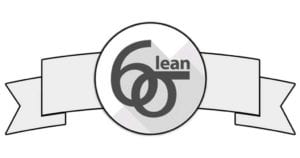Focus on the User and all else will follow. This is the first in a list of ‘ten things we know to be true’ that was developed by Google in its early days.
Focussing on the user led Google to improve the speed of searching despite concerns that it would reduce the time users spent looking at adverts. From this innovation, Google claims to have saved 5000 years, after a year of use. What a result!
The principle of user first is powerful. It’s a privilege to work with a variety of organisations of all sizes and industries, including household name corporations, FTSE 100s, government and third sector organisations. We make a difference to all of those organisations, but the difference I care about most is the difference made to the people I work with within them: the users.
Those people aren’t necessarily the ones commissioning or paying for the work – they’re the ones on the receiving end of a training course or a consulting assignment who’ll go on to use the principles and tools they’ve learned about to make lasting improvements in their workplaces. They won’t necessarily gain financially from the efficiencies they’ll make like their organisations will, but they will benefit from easier ways of working, less time spent on non-value adding activities and the capacity to add real value where it counts. I want those users to feel inspired and motivated to go and make a difference, and have the confidence to do it to full effect.
Of course, the ‘users’ will have customers too. The customers may include the commissioner of the work, the owners of particular strategic goals in the organisation, colleagues working in the processes being improved, and the customers of those processes.
And so the ripple effect begins – a process improvement team member might feel enthused and encouraged to have a go at applying something from the lean six sigma toolkit to a process of their own. A team member who feels the benefit of an easier way of working and can add value where it matters now a non value added step has been removed from the process. A customer who feels the difference in product or service quality will tell others about it.
The term ‘user’ is more specific and helpful than ‘Customer’. It reminds us of the broad range of customer groups receiving the outputs of our work and that their requirements can differ. That’s not to say that all the other customer needs don’t matter – there is a need to ensure that by addressing a particular customer’s need we aren’t compromising another, and to consider how fulfilling the needs of each customer group contributes to achieving the requirements of others in the chain. Google focussed on the user experience rather than on its bottom line when it increased search speed – by doing so, it attracted even more users. When working with any organisation, I know that by focussing on the user, equipping them with competence and confidence, the rest will follow. This I know to be true. What starts off as a ripple can turn into a wave of change.









